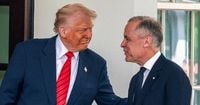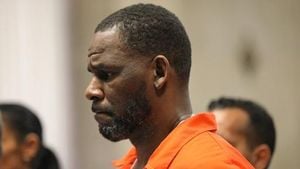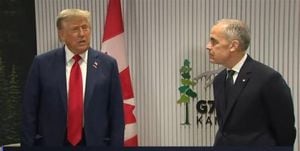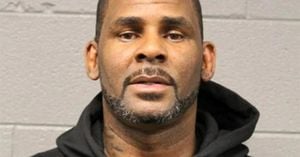President Donald Trump abruptly departed the Group of Seven (G7) summit in Kananaskis, Alberta, on Monday night, June 16, 2025, cutting short his attendance by a day amid escalating tensions between Israel and Iran. The White House confirmed that the intensifying Middle East conflict necessitated his early return to Washington, D.C., underscoring the gravity of the situation and the administration's urgent focus on the unfolding crisis.
During the summit, Trump was active on his social media platform, issuing a stark warning to the Iranian capital with the message, “Everyone should immediately evacuate Tehran!” This came alongside repeated emphases that “IRAN CAN NOT HAVE A NUCLEAR WEAPON!” and criticism that Iran had missed the opportunity to sign a deal he had proposed. Tehran, a city of approximately 9.5 million residents, has been at the center of heightened hostilities following Israeli military strikes on Iranian nuclear and military sites, which prompted retaliatory ballistic missile launches by Tehran over the weekend.
Trump’s early exit disrupted a packed G7 schedule that had included planned meetings with Ukrainian President Volodymyr Zelenskyy and Mexican President Claudia Sheinbaum on Tuesday, June 17. Sheinbaum, despite the cancellation of her meeting with Trump, chose to remain at the summit, engaging with Canadian Prime Minister Mark Carney and leaders from Germany, India, and the European Union. Mexico’s Foreign Relations Office expressed hope that the Middle East situation would not deteriorate further.
At the summit, Trump finalized a significant trade agreement with the United Kingdom, represented by Prime Minister Keir Starmer, marking a milestone in U.S.-U.K. economic relations. The deal, first announced in May, is expected to slash tariffs on goods between the two nations, covering sectors such as cars and aerospace. However, the agreement notably excludes tariffs on steel, a critical component of bilateral trade, with negotiations ongoing to resolve this outstanding issue. Trump described the deal as “fair for both” countries and predicted it would “produce a lot of jobs, a lot of income.” Starmer echoed the sentiment, calling it “a very good day for both of our countries.”
Trade discussions extended beyond the U.K., with Trump holding an impromptu meeting with European Commission President Ursula von der Leyen. The two leaders discussed “critical issues, from Ukraine to trade,” and instructed their teams to accelerate work on a fair deal. Despite previous threats by Trump of imposing tariffs as high as 50% on European goods, the talks appeared constructive, with Trump temporarily maintaining a baseline 10% import tax during negotiations.
Canadian Prime Minister Mark Carney, hosting the summit, opened the proceedings by framing the gathering as a “turning point in history,” highlighting the world’s increasing divisions and dangers. He emphasized the indispensable role of U.S. leadership, telling Trump, “the G7 is nothing without U.S. leadership,” and wished the president a belated happy 79th birthday. Carney and Trump held bilateral talks focusing on “immediate trade pressures” and set a goal to reach a comprehensive trade deal within 30 days.
However, tensions between the U.S. and Canada remain palpable. Trump has repeatedly expressed a desire to make Canada the 51st state, a notion firmly rejected by Canadian officials. Ambassador Kirsten Hillman stressed that Canada is “not there yet” on a trade deal with the U.S. and remains committed to eliminating tariffs entirely, highlighting the complexity of ongoing negotiations.
Security concerns loomed large during the summit. Defense Secretary Pete Hegseth convened with Trump and the national security team in the White House Situation Room to address the escalating Middle East conflict. The U.S. has repositioned warships and military aircraft in the region to safeguard American personnel and interests amid the Israeli-Iranian hostilities. The conflict has seen Israel conduct sophisticated strikes against Iranian military and nuclear targets, with Iran retaliating through ballistic missile launches. The U.S. has assisted Israel in intercepting these missiles, maintaining a defensive posture.
Domestically, the political climate remains charged. A federal judge in Massachusetts ruled that the Trump administration’s cuts to several hundred National Institutes of Health (NIH) research grants related to diversity, equity, inclusion, and gender identity were illegal. Judge William Young condemned the cuts as “arbitrary and capricious,” highlighting racial discrimination and discrimination against the LGBTQ community as underlying factors.
Additionally, the Trump administration faced legal challenges from anti-domestic violence coalitions suing over grant application requirements that prohibit promoting “gender ideology” or diversity programs. Meanwhile, the National Association for the Advancement of Colored People (NAACP) announced it would not invite Trump to its national convention, marking the first time in its 116-year history that a sitting president has been excluded, citing his actions as contrary to civil rights advancement.
Trump also faced scrutiny over his firing of Christopher Hanson, a Democratic commissioner of the Nuclear Regulatory Commission (NRC), an independent federal agency overseeing nuclear safety. Hanson stated that his termination was “without cause,” contrary to legal precedent, reflecting the administration’s broader efforts to assert control over independent agencies.
On the political front, the Senate Finance Committee unveiled a 549-page bill encapsulating Trump’s domestic agenda, proposing extensions of tax cuts, Medicaid spending reforms, and caps on federal deductions for state and local taxes. Senator Rand Paul, a prominent Republican critic, indicated a willingness to negotiate on the package, emphasizing the need for spending cuts alongside tax relief.
Security concerns for lawmakers intensified following the targeted shootings of two Minnesota state legislators. Senator Tina Smith confronted Senator Mike Lee over his “cruel” social media posts about the suspect, underscoring the heightened tensions and fears among congressional members. Law enforcement agencies have increased security briefings and measures, though only a few lawmakers receive round-the-clock protection.
Meanwhile, a former Coast Guard lieutenant, Peter Andrew Stinson, was arrested and charged with threatening to kill President Trump, having publicly called for his assassination since 2020. This incident adds to the growing concerns about political violence and threats against public officials.
Amid these developments, Trump maintained a firm stance on immigration enforcement, directing federal officials to prioritize deportations in major Democratic-run cities such as New York, Chicago, and Los Angeles. He justified focusing on these “sanctuary cities” as they are “where the people are,” continuing his administration’s aggressive immigration policies despite protests and legal challenges.
In the realm of diplomacy, Trump criticized the exclusion of Russia from what was once the G8, calling it a “big mistake” and suggesting that the ongoing war in Ukraine might have been avoided if Russia had remained part of the group. This stance contrasts with the broader G7 consensus, as Britain and other allies imposed new sanctions on Russia over its invasion of Ukraine, while the U.S. has held back, awaiting European action.
Adding a lighter note to the summit, European Council President António Costa presented Trump with a signed jersey from soccer star Cristiano Ronaldo, inscribed “To President Donald J. Trump, Playing for Peace,” symbolizing hopes for diplomacy amidst global turmoil.
Back at the summit venue, wildlife posed an unusual challenge. Black bears and grizzlies inhabit the Kananaskis Country area, prompting trail closures and heightened security measures including electric fences and police drones to protect the leaders and media personnel.
As the G7 summit continues without Trump, the world watches closely. The early departure of the U.S. president highlights the precarious balance between global diplomacy, trade ambitions, and the urgent demands of international security. The days ahead will test the resolve of world leaders as they navigate trade negotiations, escalating conflicts, and domestic political pressures.




